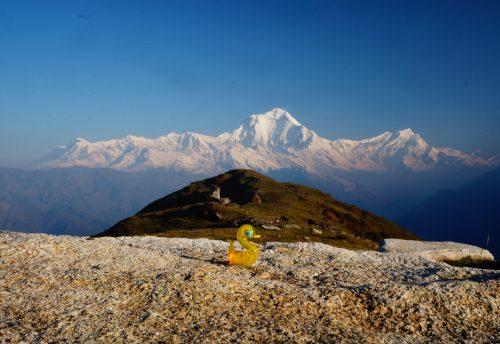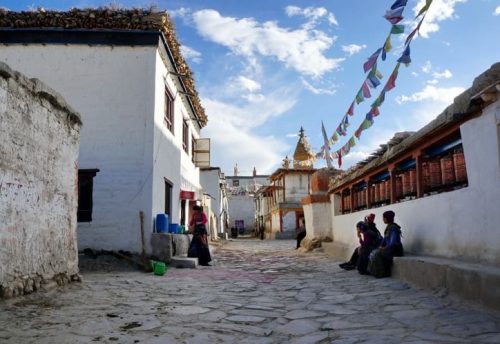The Annapurna region in Nepal is renowned for its stunning trekking trails that offer a diverse range of landscapes, from lowland villages and rice terraces to alpine forests and high-altitude deserts. The Annapurna Circuit and Annapurna Base Camp (ABC) trek are two popular trekking routes in this region.
1. Annapurna Circuit Trek:
Duration: Typically takes around 18 to 21 days.
Highlights: This trek encircles the Annapurna Massif, providing breathtaking views of Annapurna, Dhaulagiri, Machapuchare, and other peaks. The trail passes through diverse landscapes, including subtropical forests, terraced fields, and high mountain deserts. Thorong La Pass, standing at 5,416 meters (17,769 feet), is a challenging yet rewarding part of the trek.
2. Annapurna Base Camp (ABC) Trek:
Duration: Generally takes around 10 to 14 days.
Highlights: The ABC trek leads to the base of Annapurna I, one of the world’s highest peaks. The trek takes you through rhododendron forests, terraced fields, and traditional Gurung villages. The destination, Annapurna Base Camp, offers stunning panoramic views of surrounding peaks.
Both treks provide opportunities to experience the local culture, interact with diverse ethnic communities, and enjoy the hospitality of tea houses and lodges along the way.
Tips for Annapurna Trekking:
Permits: Obtain the necessary permits, such as the Annapurna Conservation Area Permit (ACAP) and the Trekkers’ Information Management System (TIMS) card.
Physical Fitness: Adequate physical preparation is essential, especially for the Annapurna Circuit, which involves high-altitude passes.
Weather Considerations: Be mindful of the weather conditions, as they can vary based on the season. The best time for trekking is during the spring (March to May) and autumn (September to November) when the weather is generally stable.
Altitude Sickness: Understand the symptoms of altitude sickness and acclimatize properly. It’s crucial to ascend gradually and allow your body to adjust to higher altitudes.
Pack Essentials: Pack accordingly, including warm clothing, a good pair of trekking boots, a reliable backpack, and other essential gear. Be prepared for various weather conditions.
Local Culture: Respect local customs and traditions. Engage with the local communities in a respectful and responsible manner.
Always check for the latest information and consider hiring a local guide and/or porter for a more enjoyable and safer trekking experience. Trekking in the Annapurna region is not just about the destination but also about the journey and the cultural richness of the region.


